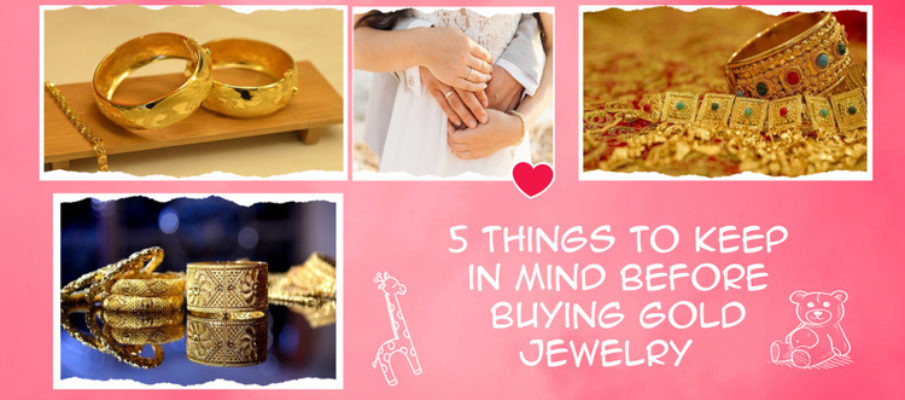The term jewellery comes from the word ‘jewel,’ which signifies a toy. A jeweller is someone who creates, sells, and fixes jewellery. The goldsmith is the person who creates jewellery out of gold metal in India. The most basic type of jewellery varies greatly from one culture to the next, and even from one country to the next.
Gold, silver, platinum, diamond, emerald, pearls, gemstones, ruby, sapphire, coins, glass, wood, shells, natural clay, beads, and other materials can all be used to create jewellery. It can be created by hand or by machine. When compared to machine-made jewellery, handcrafted jewellery is more expensive. Jewelry is worn to show off one’s social standing.
Importance of Gold in Indian Culture
In Indian tradition, gold is one of the most valued metals. No auspicious occasion passes by without the usage of this metal, from festivals to marriages to birthdays. Indian temples are known for their new and ancient gold idols, which are well-protected against theft and burglary. Gold is seen by the majority of Indians as a valuable investment that may be utilised in times of financial difficulty.
Gold has been living up to its reputation for a long time, but it has recently begun to lose its lustre. Gold prices have been on a downward trend, and as a result, clients have purchased the metal in the hopes of reaping significant gains when the commodity’s price rises.
What is a jewellery wastage charge?
A piece of jewellery must go through a series of steps to be created, including melting, cutting, and sculpting. This will result in some ornamental metal wastage, as the perfect pieces are joined together to form a single piece of well-designed pattern of jewellery. This is referred to as wastage of metal, for which the jewellers will charge a fee, which the buyer must pay at the time of purchase, and this is referred to as wastage charges. Wastage costs vary greatly from one jewellery piece to the next, as well as from one jeweller to the next.
What is the meaning of the term “making charge” in the context of jewellery?
The costs involved in the process of creating and designing a piece of jewellery are included in the making charges. Gold, for example, is discovered in a metal form that must go through numerous procedures before being turned into a piece of jewellery, resulting in a charge. Labor charges are another name for making charges.
What does it mean to have BIS Hallmarked Jewellery?
BIS Hallmark is an Indian method for certifying the purity of metals, primarily gold and silver jewellery. It verifies that the item of jewellery meets the Bureau of Indian Requirements’ established standards. BIS Hallmark is made up of the following elements:
• The purity of gold – 22K916 for 22 karats, 18K750 for 18 karats, 14K585 for 14 karats
• The BIS logo (a triangle shape logo)
• The assaying center’s logo
• The jeweller’s code or brand
What are Jewellery Gold Schemes?
Gold Schemes is a savings programme offered by the jewel to assist aspiring customers in purchasing the jewellery of their choice by saving a set amount of money on a monthly basis for a specific period of time, after which they can purchase the ornamental piece of their choice that is equivalent to the total deposited money, including any bonus money.
People may find it difficult to buy jewellery all at once due to the high prices; to alleviate this load, most jewellers in India have introduced gold plans to assist clients in making informed purchasing decisions. GRT Golden Eleven Flexi Plan, Malabar Gold & Diamonds’ Golden Gain Plan, KalyanJeweller’sDhanvarsha, Tanishq’s Golden Harvest Scheme, and others are some of the most popular gold savings plans.
How do gold prices change in India?
Gold prices in India tend to fluctuate in response to world prices. Any change in the price of decorative metal in the foreign market, whether positive or negative, will have a direct impact on the price of yellow metal in the local market. The value of the dollar, interest rates, inflation rates, currency changes, demand and supply levels, economic circumstances, and so on are all factors that influence gold prices in the worldwide market.
The value of gold, for example, has an inverse connection with the value of the US dollar.Any drop in the value of the dollar will lead to a rise in gold prices, and vice versa. Physical demand for gold is also a major factor in setting gold prices in the country. To minimise price fluctuations, central banks often buy gold and seldom sell it. The United States of America holds the world’s largest gold reserves.
When purchasing jewellery, there are a few things to keep in mind.
Whether you’re a first-time buyer or have been buying jewellery for a long time, the process is intriguing and certainly not for everyone. When we go into a jewellery store, the table tops and displays are adorned with some of the most stunning pieces of jewellery we’ve ever seen. Everything appears to be beautiful enough to take home.But it can’t be right, can it? Everything becomes perplexing when we begin inquiring about each diamond that piques our interest. Which is better: 14k gold or 18k gold? What gemstone should you buy?
Should we buy gold jewellery or platinum jewellery instead? With so many inquiries, it’s better to know everything ahead of time to avoid any confusion. This implies you should know how to shop for the greatest jewellery for yourself. Let’s have a look at a few pointers from Dr. C Vinod Hayagriv, Director and Managing Director of the 150-year-old C KrishniahChetty Group OfJewellers, on how to make the best jewellery buy for yourself.
1. Define your personal style.
When buying jewellery, the first question to ask yourself is, “What do you want?”
This is easier said than done, but it implies you should know what sort of jewellery you want to buy.
To prevent getting overwhelmed, consider if you want classic jewellery or the more unique and quirky gems of today before entering a jewellery store.
When looking for earrings, some people prefer ruby and gold studs for a more conventional look.
Classic diamond studs, on the other hand, may be preferred by individuals who appreciate exquisite and modern jewellery, such as these:
If you have a favourite gemstone, such as sapphires, amethyst, or any other, let the salesman know ahead of time.
Making a decision gets easier when you have a style in mind. If you are looking for Jewelry shop in Siliguri define your style first.
2. Create a budget that reflects your needs.
Knowing your budget is the second most crucial item (some could even say that it is the most important!).
When people buy jewellery, they do it for a variety of reasons:
• they have to give it as a gift to someone else
• they get a promotion or bonus at work
• they have been saving up for it
In any of the situations, you’ll have a budget or a point at which you’ll stop making purchases.
It is critical to understand your financial limit. It will not only give you an idea of the kind of jewellery to look for, but it will also help you cut down your options – great!
Remember that while spending a little more money on your favourite gems is always a good idea, going over your pre-determined budget in impulsive purchases isn’t.
3. Learn about jewellery.
It’s not enough to know what you want. Sometimes what we want is out of style, or may be replaced with something more powerful. As a result, it is essential to do some research before making a purchase.
When you walk into a jewellery store, for example, you will be confronted by a plethora of terminology with labels like 14kt, 18kt, and 22kt. If you don’t understand what they signify, you might be duped if you go to an untrustworthy vendor and they discover you’re a first-time buyer.
As a result, conduct comprehensive research. Determine the carat count you are willing to accept and the type of gold you desire (yellow, white, gold, etc.).
For example, if you choose that yellow gold is the metal you require, this traditional gold ring is a suitable choice.
On the other hand, if you don’t like the colour of gold on your fingers and want gold that isn’t quite gold, don’t worry; you’re on the right track.
This simply signifies that you aren’t interested in the usual yellow gold jewellery. This traditional gold ring, constructed of 18kt white gold, is particularly popular.
4. Go to a trusted vendor.
When purchasing valuable jewellery, selecting the finest and most trustworthy vendor is critical.
Because most of us lack the technical knowledge to determine the authenticity of gemstones, diamonds, or gold on sight, picking a jewellery store with a good reputation is a big benefit.Whether it’s modest diamond studs or a huge gold necklace, jewellery is a significant investment.
5. Keep an eye out for the hallmarking.
Even if the vendor is trustworthy, one hopes for some personal assurance while acquiring jewellery.
As a result, while purchasing jewellery, it’s a good idea to check for hallmarking.
Real gold jewellery has a hallmarking that indicates the carat count, indicating that it is genuine and trustworthy.
Takeaway: Now that you know the basic do’s and don’ts of buying jewellery, it’s time to figure out your own style, set a budget, do your homework, and go out in quest of the perfect piece.All buyers of jewellery are advised always to buy the jewellery from reputed shop .

